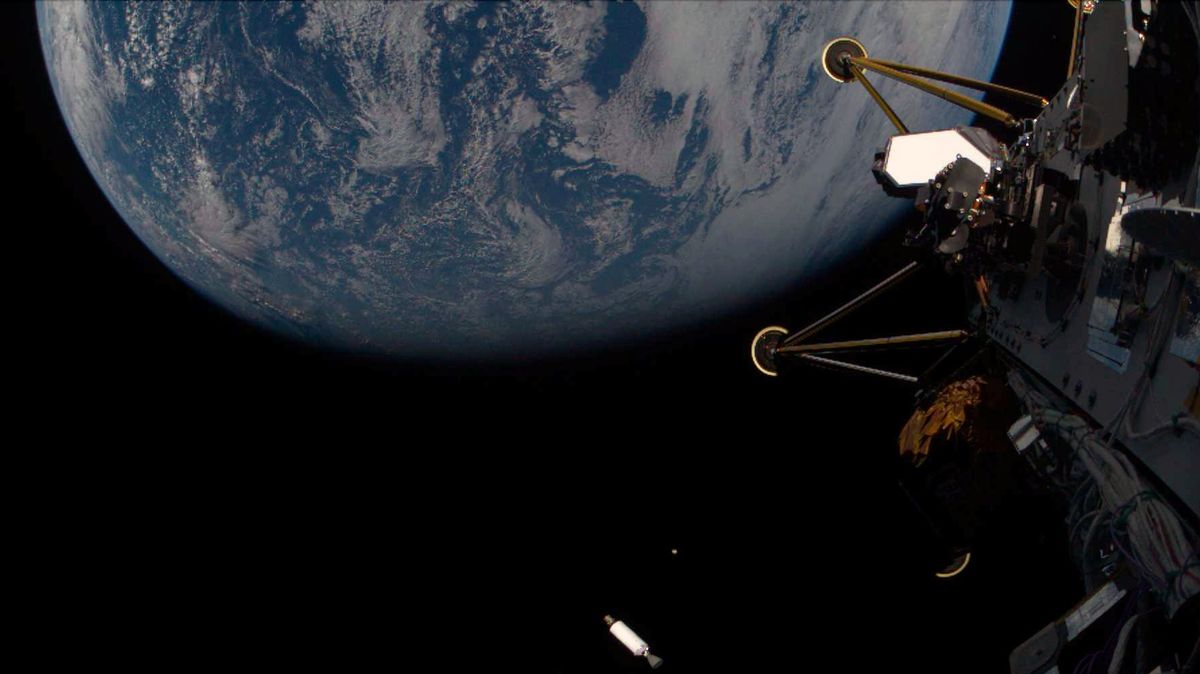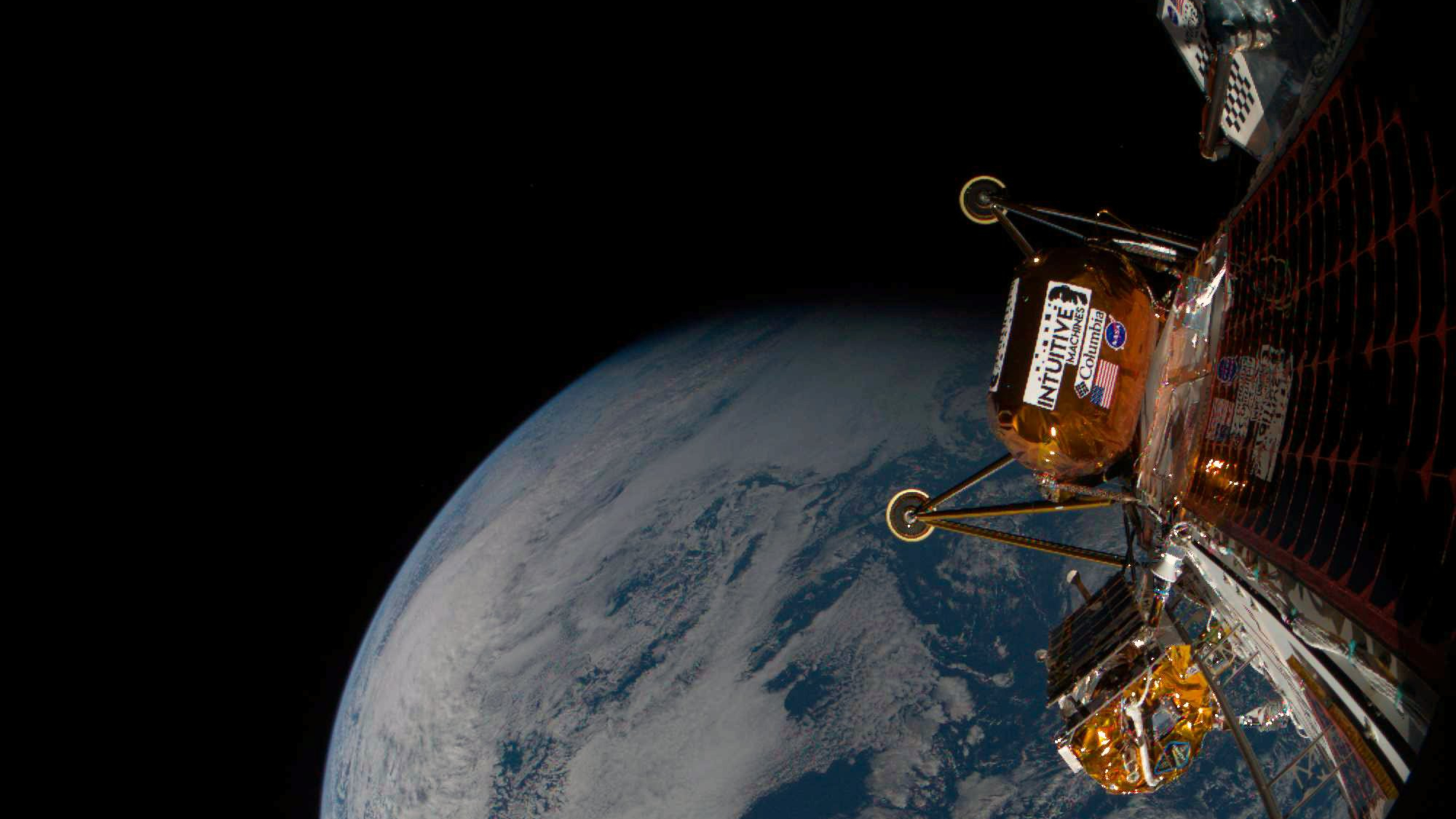
A recently launched lunar lander has taken some incredible photographs of Earth.
Athena, the second lunar lander developed by the Houston-based company Intuitive Machines, was lifted into space by a SpaceX Falcon 9 rocket from Florida’s Space Coast on Wednesday evening (February 26).
Shortly after its deployment into space, Athena captured a series of stunning selfies featuring Earth in the backdrop, including one image that reveals the Falcon 9’s upper stage floating below the lander. The bright dots seen near the rocket stage might be other payloads that accompanied Athena, such as NASA’s Lunar Trailblazer orbiter and a probe from the asteroid-mining firm Astroforge named Odin.

The images indicate that Athena’s mission, known as IM-2, is progressing smoothly.
“After liftoff on February 26, Athena achieved a stable position, successfully initiated solar charging, and established radio communication with the mission control center in Houston,” Intuitive Machines reported in an update on February 27.
The company added, “The lander is in optimal condition and preparing for a series of main engine burns to adjust its trajectory for lunar orbit insertion scheduled for March 3, with a lunar landing anticipated on March 6.”
IM-2 is part of NASA’s Commercial Lunar Payload Services (CLPS) program, which facilitates the deployment of NASA’s scientific instruments on private lunar landers to gather valuable lunar data ahead of the future Artemis missions.
The primary payload aboard Athena is PRIME-1 (“Polar Resources Ice Mining Experiment 1”), which includes a deep-drilling tool and a mass spectrometer. This equipment will enable scientists to evaluate the presence and accessibility of water ice at Athena’s designated boarding site near the lunar south pole.
Athena is also equipped with Grace, an innovative hopping spacecraft engineered by Intuitive Machines that aims to explore a crater near the landing site, as well as MAPP, a small rover developed by the Colorado-based company Lunar Outpost. These three robots will communicate with each other through another payload of IM-2, Nokia’s Lunar Surface Communication System, which will set up the first-ever 4G/LTE network on the moon.
Intuitive Machines’ inaugural lunar lander, Odysseus, successfully landed on the moon in February 2024, marking it as the first privately operated vehicle to achieve this milestone. However, if everything goes according to plan, Athena will not be the second to accomplish this feat.
Firefly Aerospace is preparing for its own lunar landing attempt with its Blue Ghost lander, scheduled for touchdown in the early hours of March 2. It launched on January 15 alongside Resilience, a lunar lander designed by the Tokyo-based company ispace, which plans to attempt landing in late May or early June.









